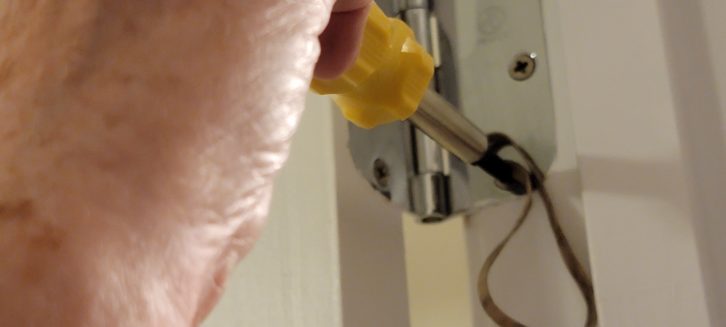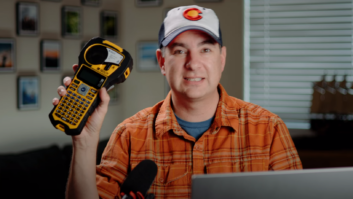Hank Landsberg, longtime principal of Henry Engineering and Sine Control Technology, knows about the lack of new talent entering the radio engineering field, but shares this photo of an engineer in training. Meet Ivy Koza, 4, who’s watching over a backup Broadcast Electronics AM transmitter.

Ivy comes from a distinguished family of broadcast engineers. Her dad is Tim Koza, chief at KJLH(FM) in Los Angeles. Tim’s dad is Tom Koza, recently retired after a 50-year career in L.A. radio engineering. And Ivy’s “Uncle Hank” is Hank Landsberg! Nothing like getting an early start on a satisfying career.
Feeding EAS
William Harrison is the chief engineer of WETA(FM) in Washington. Replying to Larry Wilkins’ request for information on inexpensive EAS receivers, he suggests the ATS-20, an import from China. It’s based on the Arduino platform and uses a Silicon Labs receiver chip, the 4732.

You can find the code and schematics online and build one yourself, but they are readily available from sources like Walmart, Amazon, AliExpress and eBay, in a range of prices (we saw $30 to $65). Models include the ATS-20, ATS-20+ and ATS-25 models. The various models can receive FM, AM/FM or shortwave. They have a built-in battery and generally work fairly well. These radios use the SI4735 Arduino library created by a user called PU2CLR; this resource is useful.
Read the Amazon reviews before buying. Users say there was no instruction booklet, meaning you have to figure it out as you go. YouTube has a couple of videos that should be helpful.
Strip and grip
Think you know everything about screws? Take a few minutes to expand your knowledge by visiting Grainger’s “Know How” informational page “Types of Screwdrivers and Their Uses.”
You’ll see that some of the screw tips listed are designed to prevent the head from stripping. If you already have a screw with a stripped head, try the tip shown in the accompanying photos before you invest in a screw extractor. Lay a wide rubber band across the head of the screw before inserting the screwdriver. The rubber works like those rubber jar lid friction pads, grabbing the surfaces of the screw head and the screwdriver. It might just get you out of a jam.

[Read Another Workbench by John Bisset]
Buck that hum
Fred Baumgartner sent along great information on killing ground loops using a “hum bucker.” It’s a heavy, square device, about 6 x 6 x 4 inches, consisting of a short piece of coax wound around a massive chunk of ferrite, with two BNC connectors (or PL-259 if very old).
Electrically, it’s just a short piece of coax. You can break a hum loop or strip RF off anything from near-DC to a couple of GHz, analog or digital. These days, Fred has found it useful for tough problems from composite FM audio to flaky serial digital like SDI video.
Once-common telco “120c repeat coils” are still available for under $100. These wideband transformers have multiple windings for a range of impedance matching. They easily pass 10 Hz to about 200 kHz, even though they were never intended for that bandwidth.
Fred had an AM station that subscribed to cable; the drop picked up lots of AM and a fair amount of 60 Hz. Fred’s solution was to take two 75/300 Ohm transformers and tie the 300 Ohm connections together through 0.01 uF caps of sufficient voltage (25 V might not make it).
Insert this isolator into the cable line and everything gets happier. You can’t do this with ferrite cores around the coax. Fred uses this technique to keep his 160-meter ham rig out of momma’s TV.
Thanks for the tip! Workbench submissions are encouraged, qualify for SBE recertification credit and can be emailed to [email protected].








